Via Francigena Part 1 route map |
Canterbury ~ Womenswold ~ Shepherdswell ~ Dover |
Distance: 35 km (35/1,900km)|
Time (for us): 2 days |
Ascent: 417m |
Canterbury Cathedral | Eastbridge Pilgrim Hospital, Canterbury | Oast houses of Kent | White Cliffs of Dover |
How do you start such a long, long journey?
Well, it turns out, in an old pilgrim town, and with an old intimate ritual, performed in one of the most important cathedrals in the world. It all starts in Canterbury.
Canterbury and its Cathedral already has pilgrim pedigree thanks to Chaucer’s Canterbury Tales, all those rollicking tales told by bored pilgrims. And as it’s the official starting point of the Via Francigena too, we were excited to explore the town’s nooks and crannies, and it really is stuffed with pilgrim stories. And we really do mean it’s everywhere!
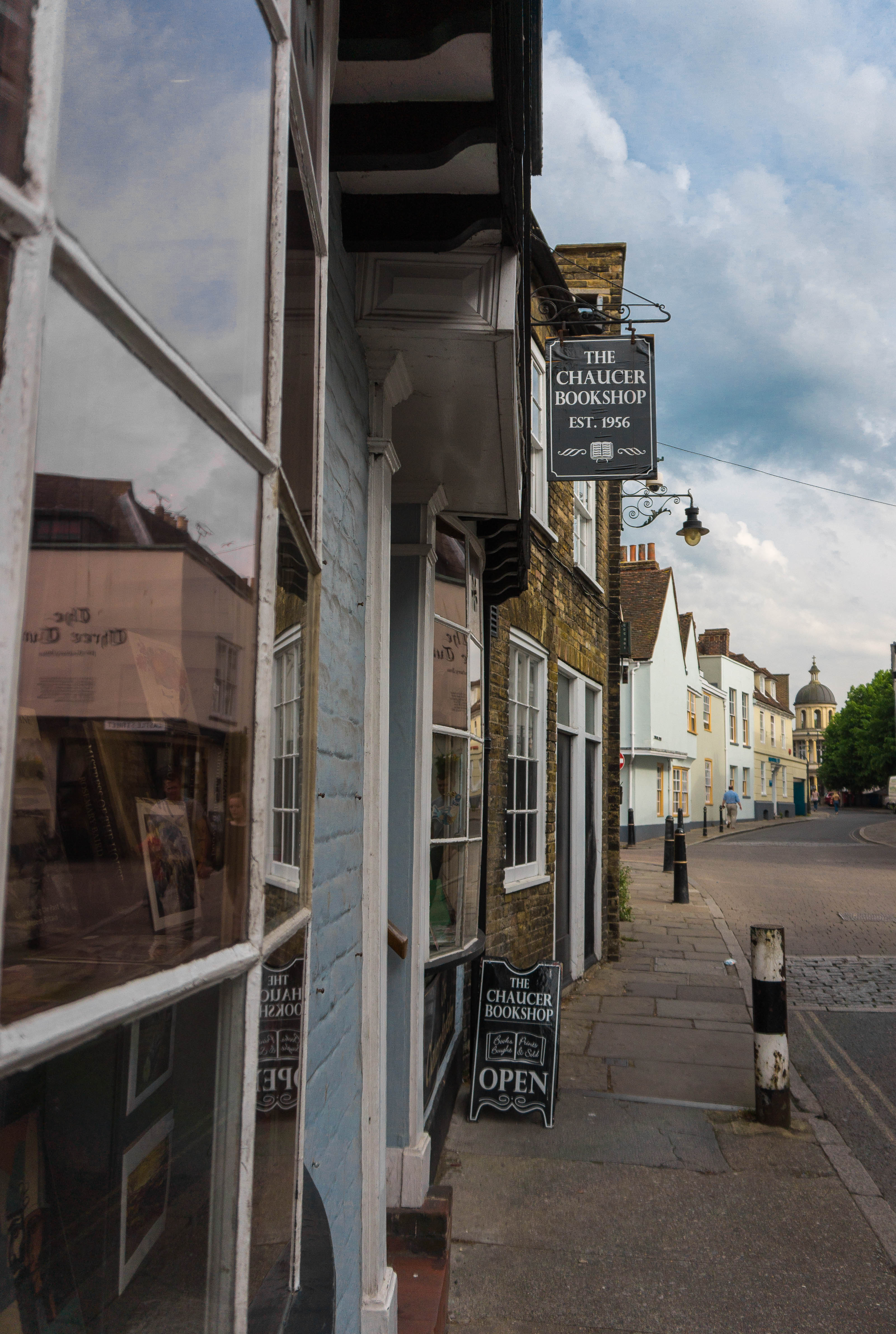
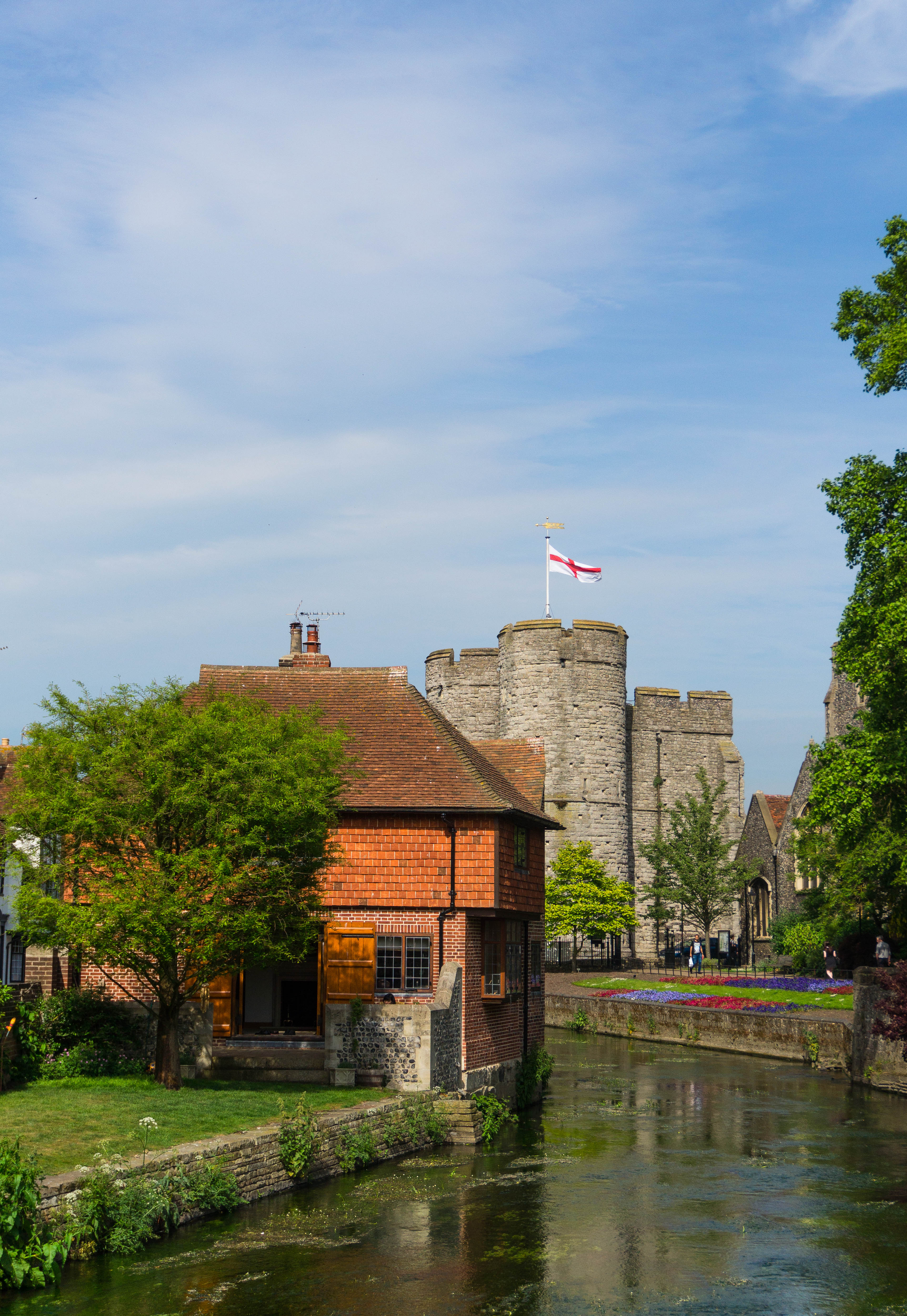
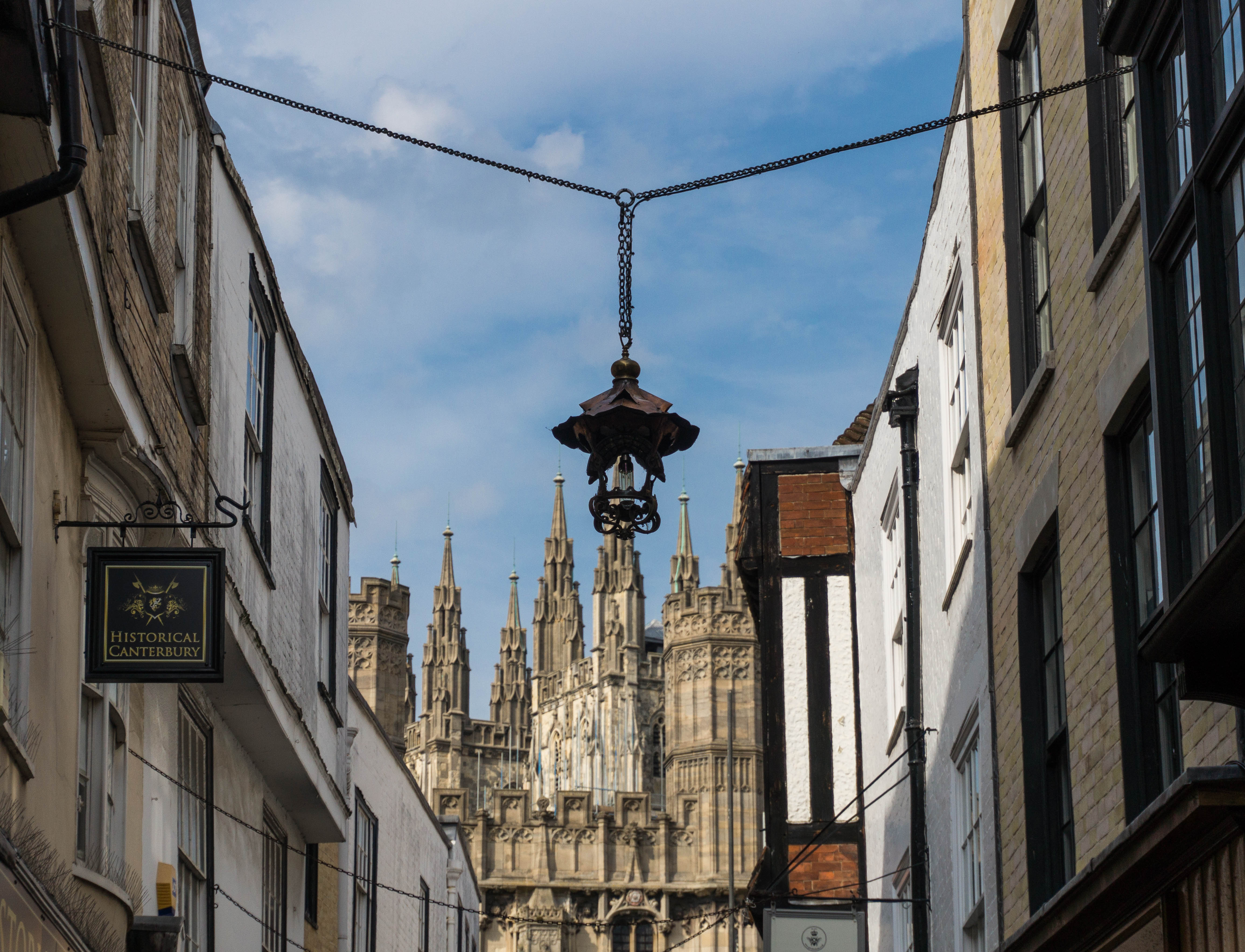
Hearing that we were walking, the Cathedral had invited us to evensong the night before we began. It’s a beautiful little sung service to kind of salute the end the day. It’s also free to anyone who wants to be there. We sat in the stalls mesmerised by the choir, their voices spiralling up into this giant raftered hall that towered above us.
Afterwards, a tall clergyman who knew exactly who we were walked us to the shrine of the murdered Thomas Becket. He pointed to a deep dip in the stone ledge in the middle of the floor. ‘It has been worn away by near a thousand years of pilgrim knees,’ he said. A little candle flickered next to it, and there was utter quiet. The canon murmured a few prayers, touching our heads.
Catch it when it’s quiet, and anyone visiting the Cathedral will feel its strange, spellbinding atmosphere.
Our clergy-guide also handed us two pilgrim passports as credentials. These were really just sheaves of blank sheets, ready to be filled with stamps and signatures from all over Europe, from all kinds of people we had yet to meet. He wished us good travels, and left.
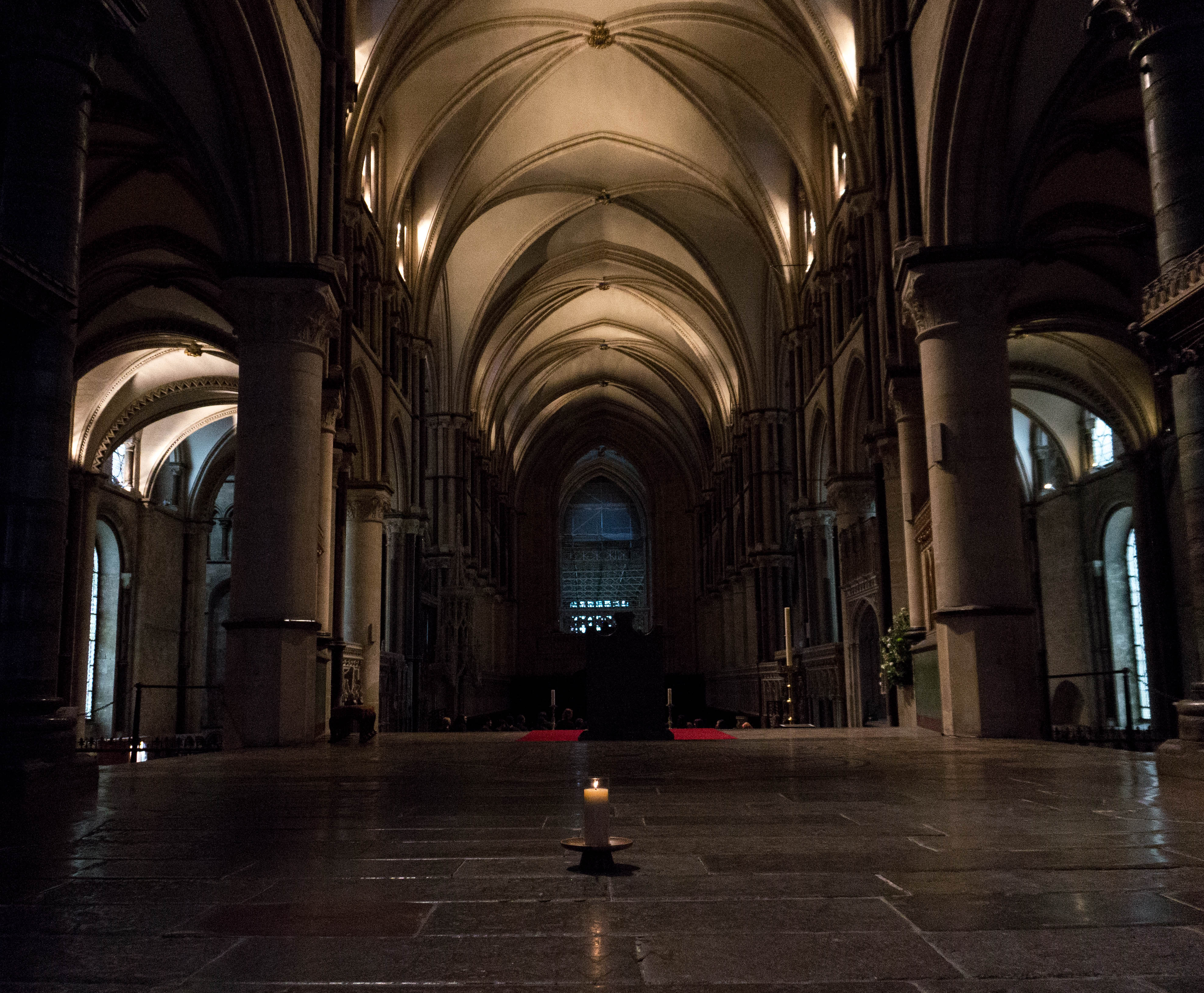
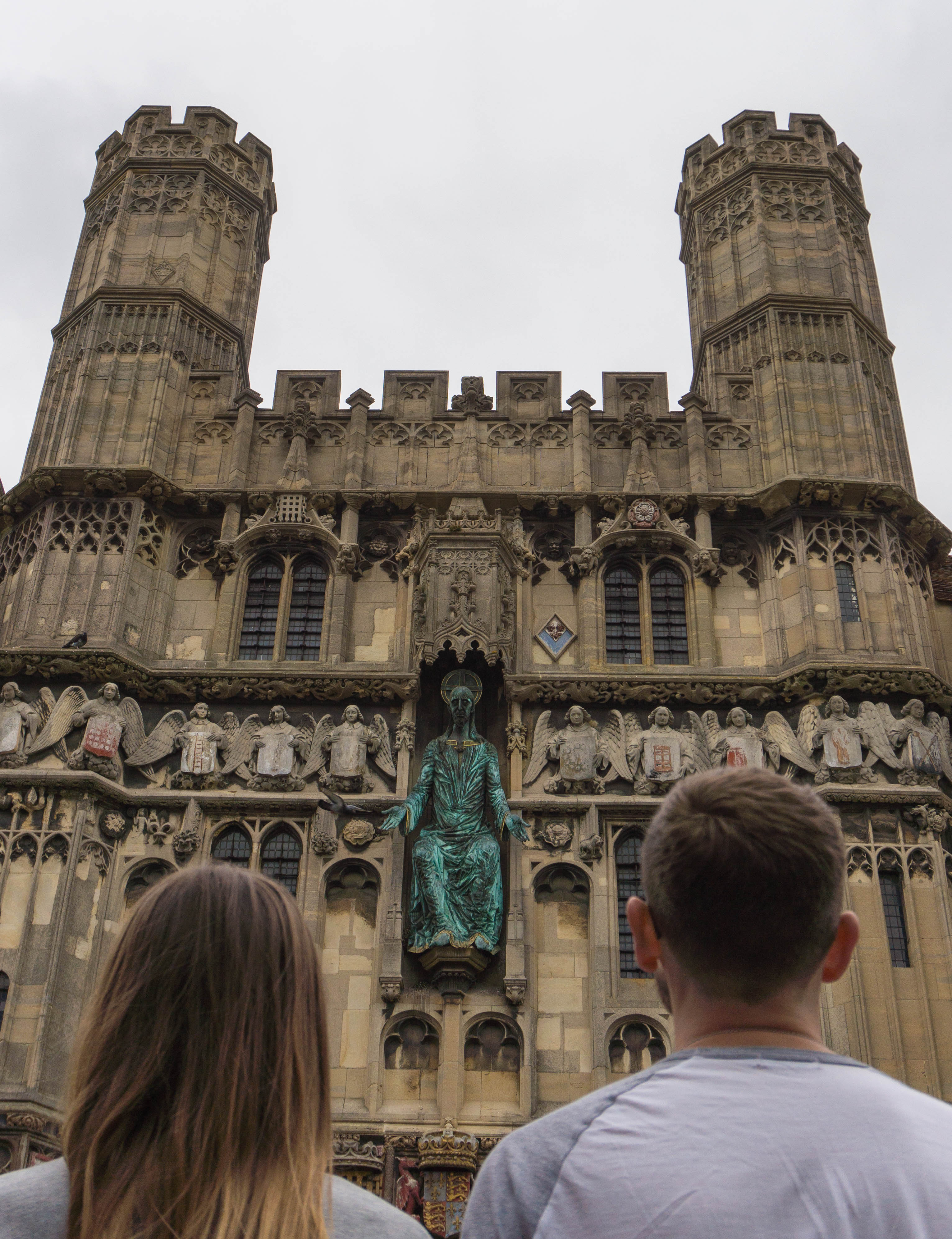
And the beginning of the Via Francigena is pretty much like any little stroll you might take – just add in a massive sense of trepidation, and obscenely large rucksacks. We turned a casual left out of Christchurch Gate and walked through shopping crowds into the suburbs. We stumbled across the old Eastbridge Pilgrim Hospital, with a roof built like the upturned hull of a boat. And further away we found St Martin’s, England’s oldest parish church (in use), and the ruined St Augustine’s Abbey. For us, each one was a pilgrim stamp, but also so worth seeing to find out more about the Canterbury of the traveller.
Out of Canterbury the route properly followed the North Downs Way, a national trail that goes from Farnham to Dover. As the town gave way to countryside, that British drizzle began to fall and we quickly passed through Patrixbourne, with its Norman church, out to the village of Womenswold. We stopped to camp, even though it’s not so very far from Canterbury. ‘Get that tent up right quick,’ Jackie-at-the-campsite said to us when we arrived, ‘There’s a front coming in.’
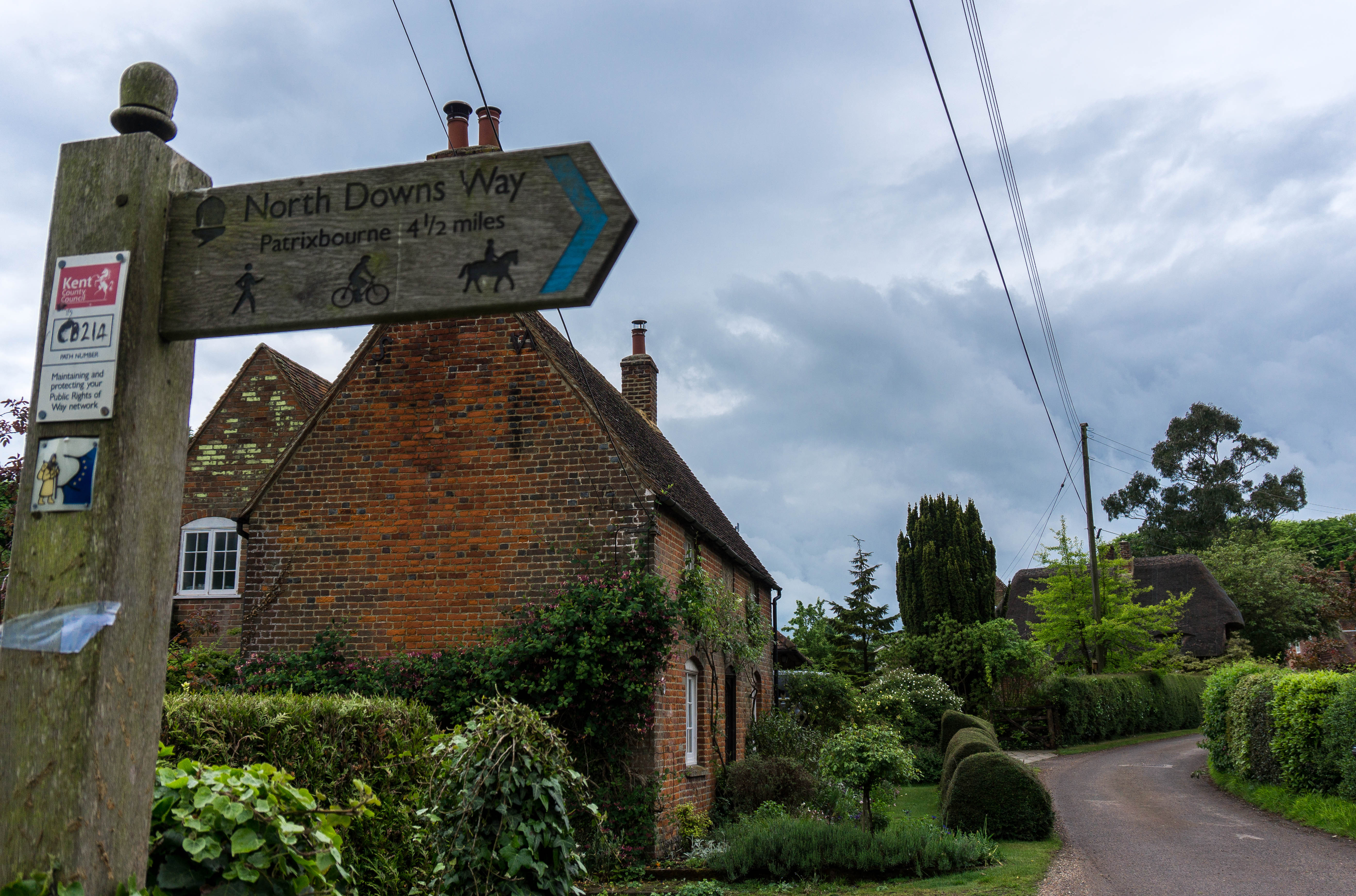
And there really, really, was. It rained for twelve hours, fat drops hitting the roof of the tent unrelentingly. We gazed up at it (awake) all through the night and wondered a bit what we were doing.
Weepy and ominous skies followed us over the North Downs, but the Via Francigena was a gentle and pretty route. It took us through giant fields of chaotic yellow rapeseed, quiet copses of woodland and the grounds of old Palladian mansions. Kentish villages appeared too, with red tile cladding and peaked chimney oast houses (apparently for hop kilns, grown all over the place in Kent for beer).
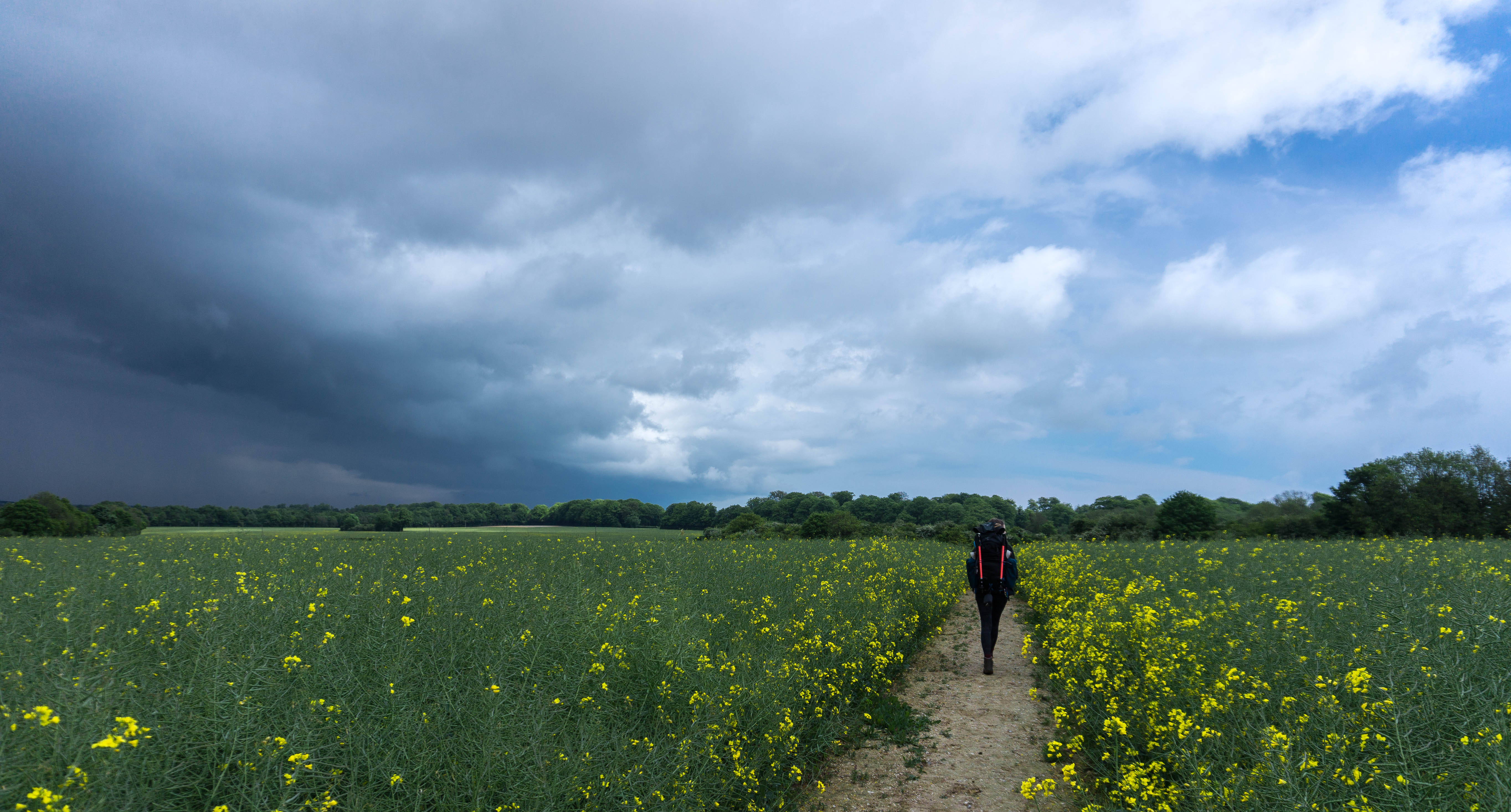
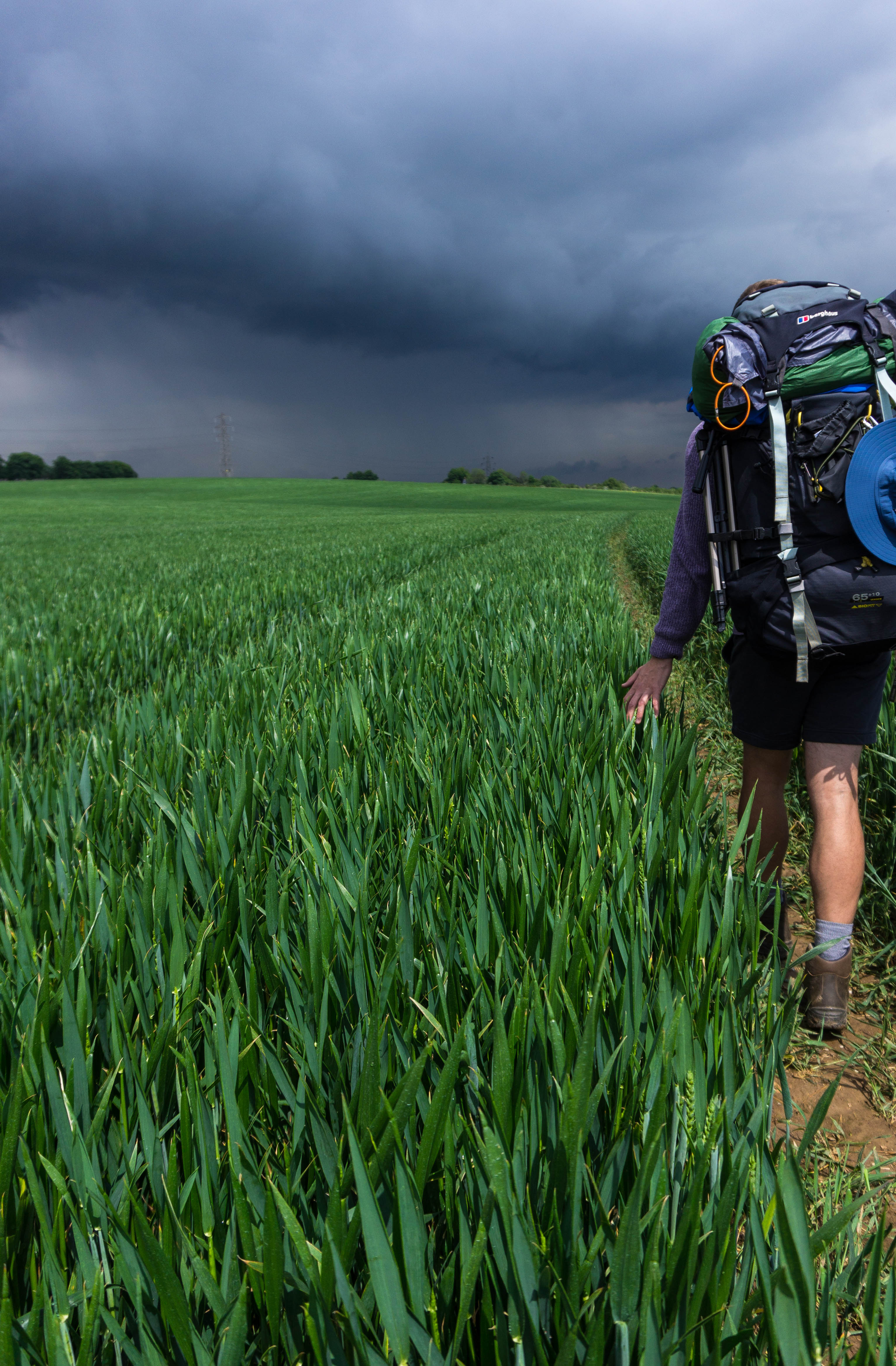
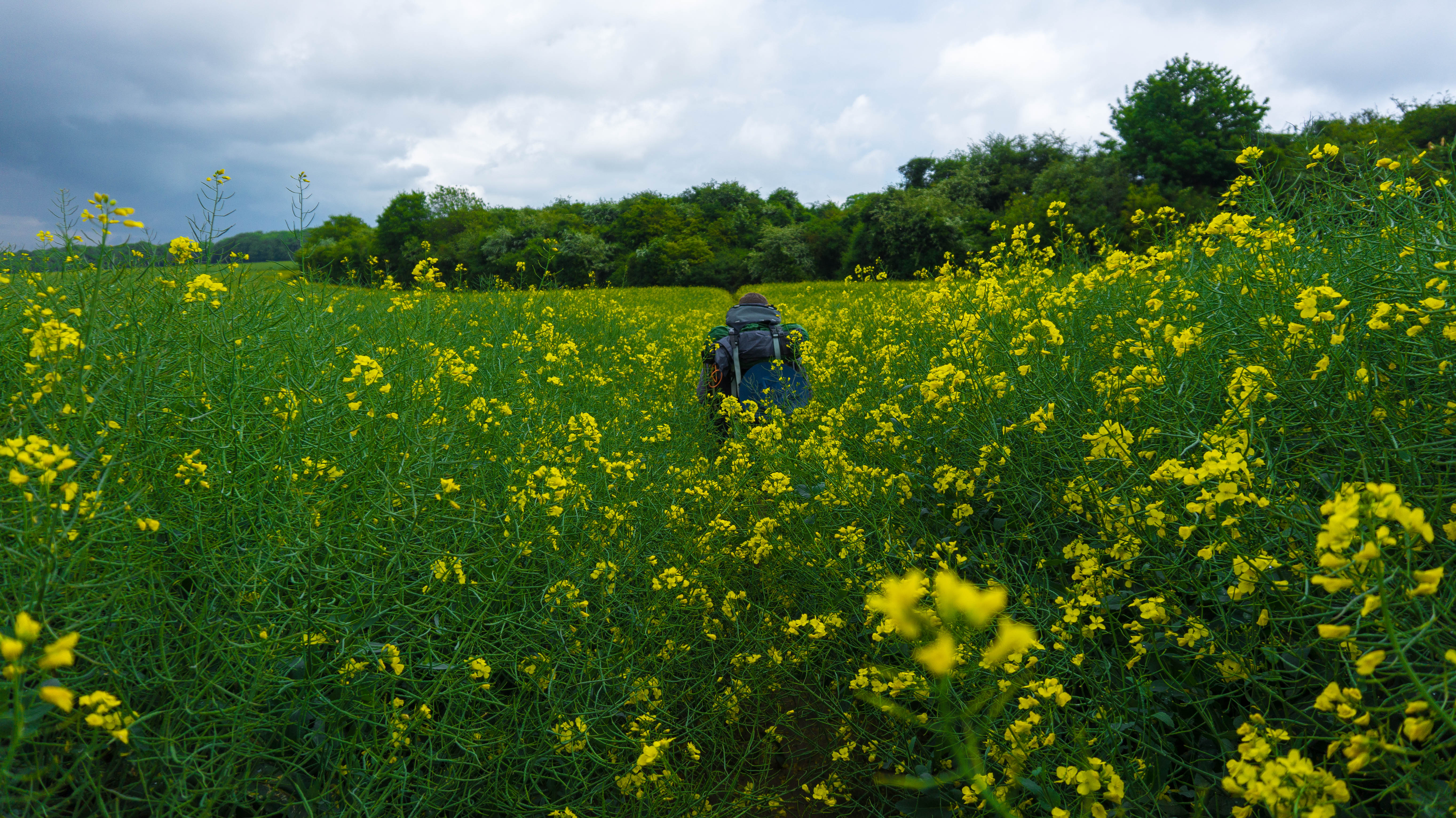
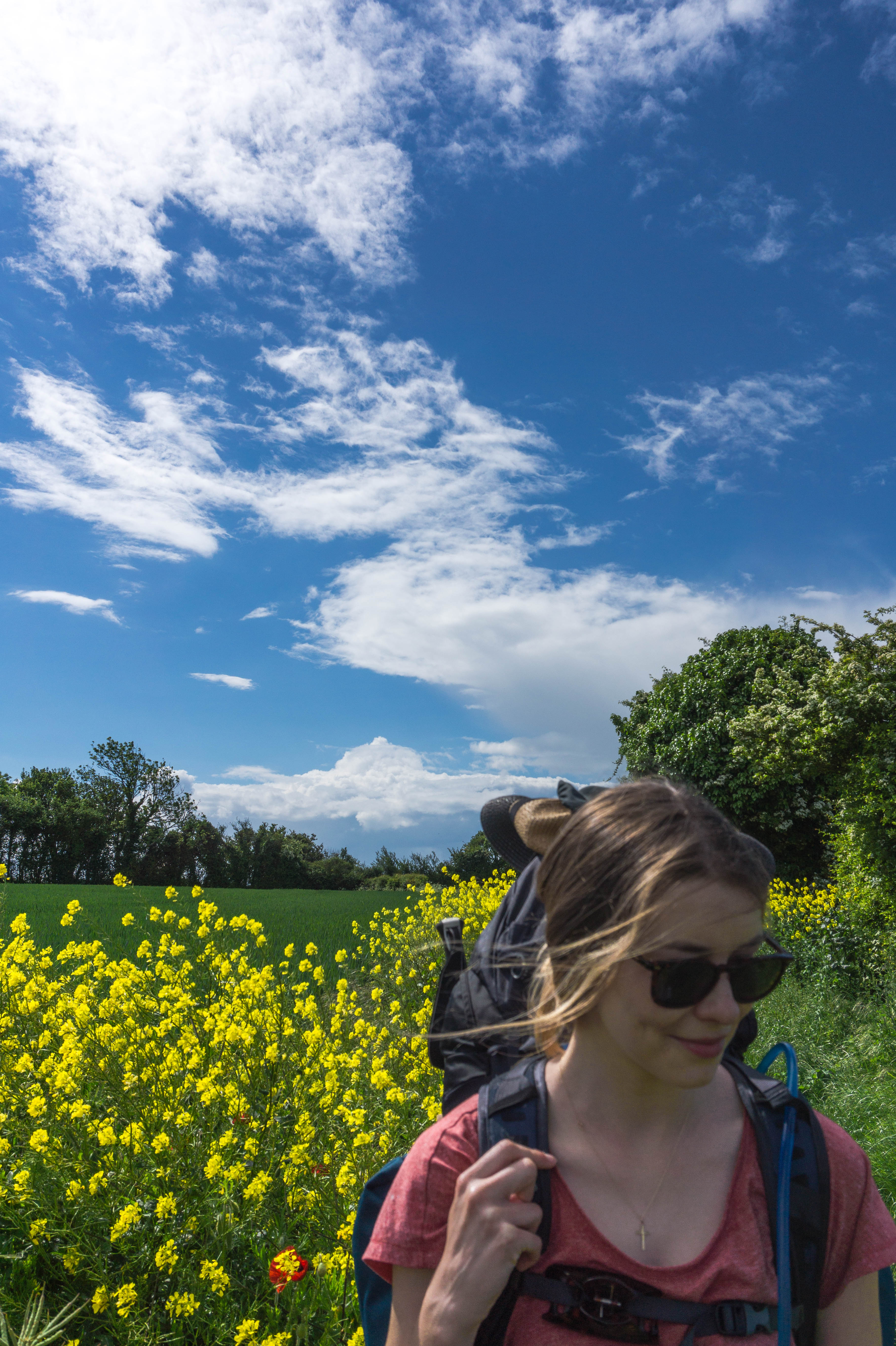
By the time we reached the sea and our last camp of England, brilliant sunshine had finally appeared. We had arrived at Dover and its white chalk cliffs. There is a number of gorgeous walks up on the cliffs with panoramic lookouts onto an aqua green sea. We carried on reluctantly, passing a sign pointing the way to Inverness in Scotland, which was weirdly about as far away as Rome. Far, whichever way.
This is where you can finish your Canterbury to Dover stretch, and hop back on a train to Canterbury which is a great option, particularly if you get up on the cliffs too. But we, dodging lorries, bought foot passenger tickets for the next ferry out to Calais. Funny, but we were the only people on foot, the first ones on the ship and the last ones off. Lots of staff stopped us, curious to know where we going and why with those huge bags. We told them and they shook their heads, laughing and wishing us luck.
It was with a weird mix of feelings though that we stood on the deck of that ferry, looking back at the last bit of the UK. No bluebirds, just blue skies. Maybe it felt like an uncertain kind of freedom.
And every step technically taking us closer to Rome…
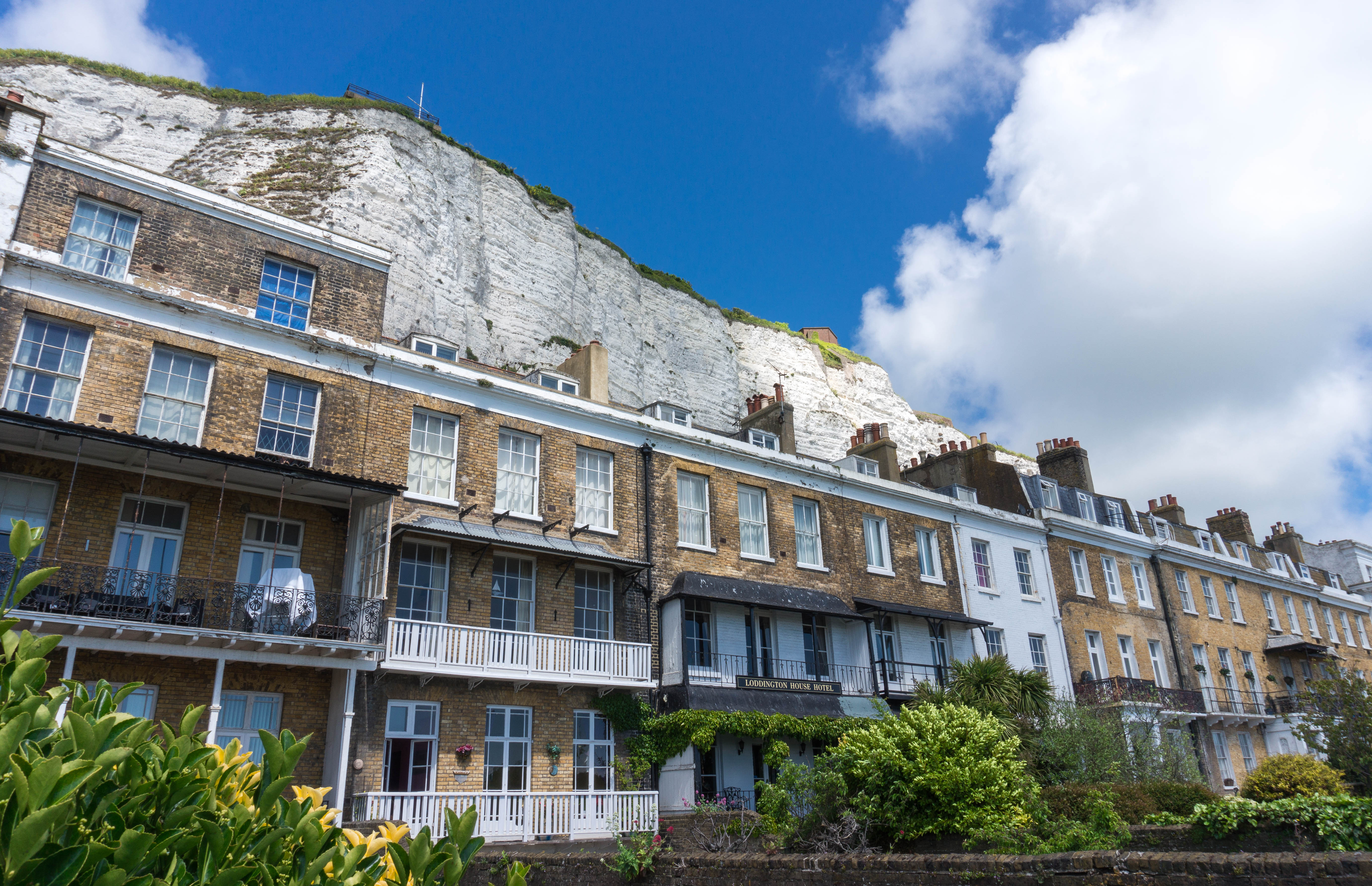
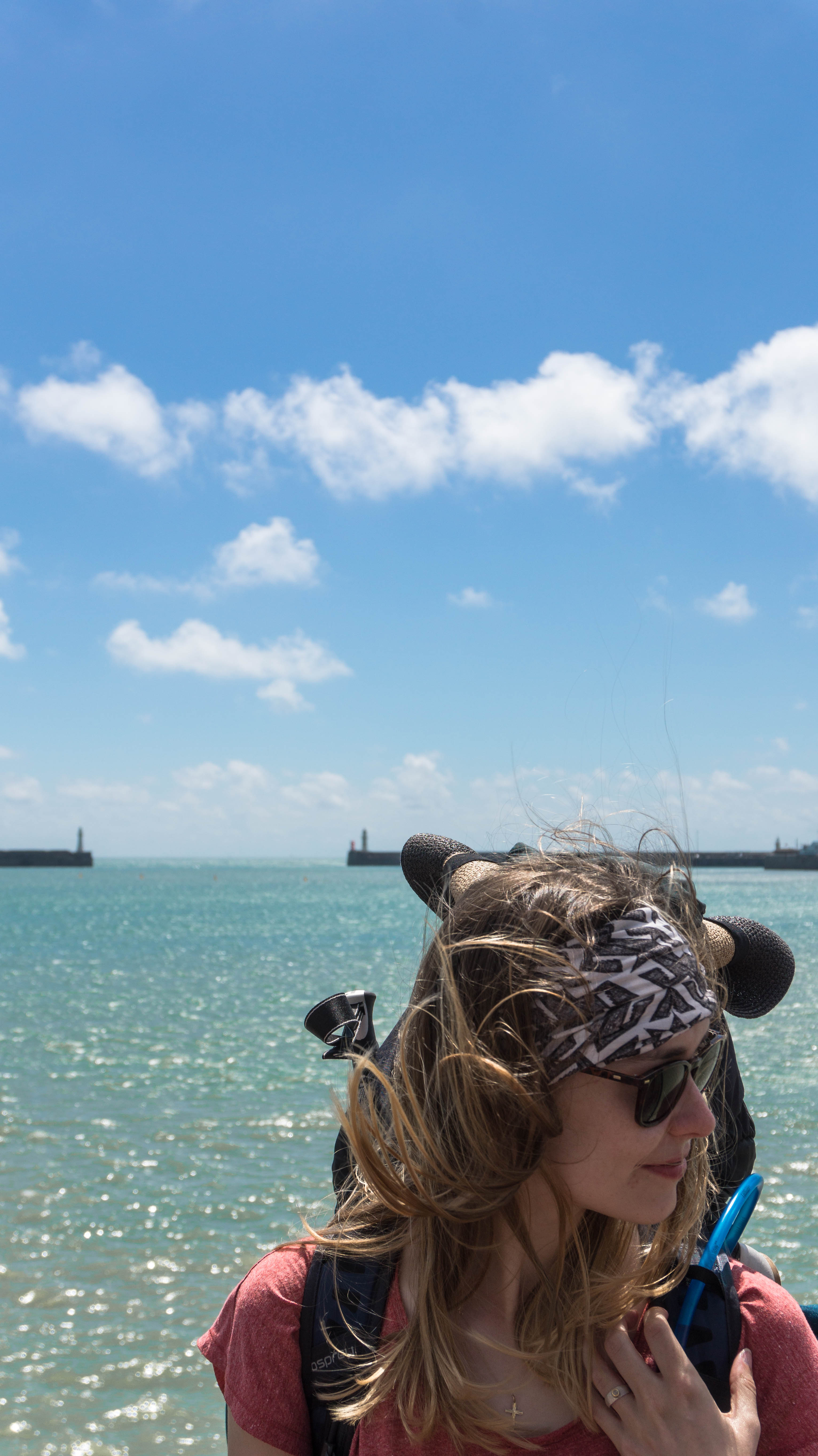
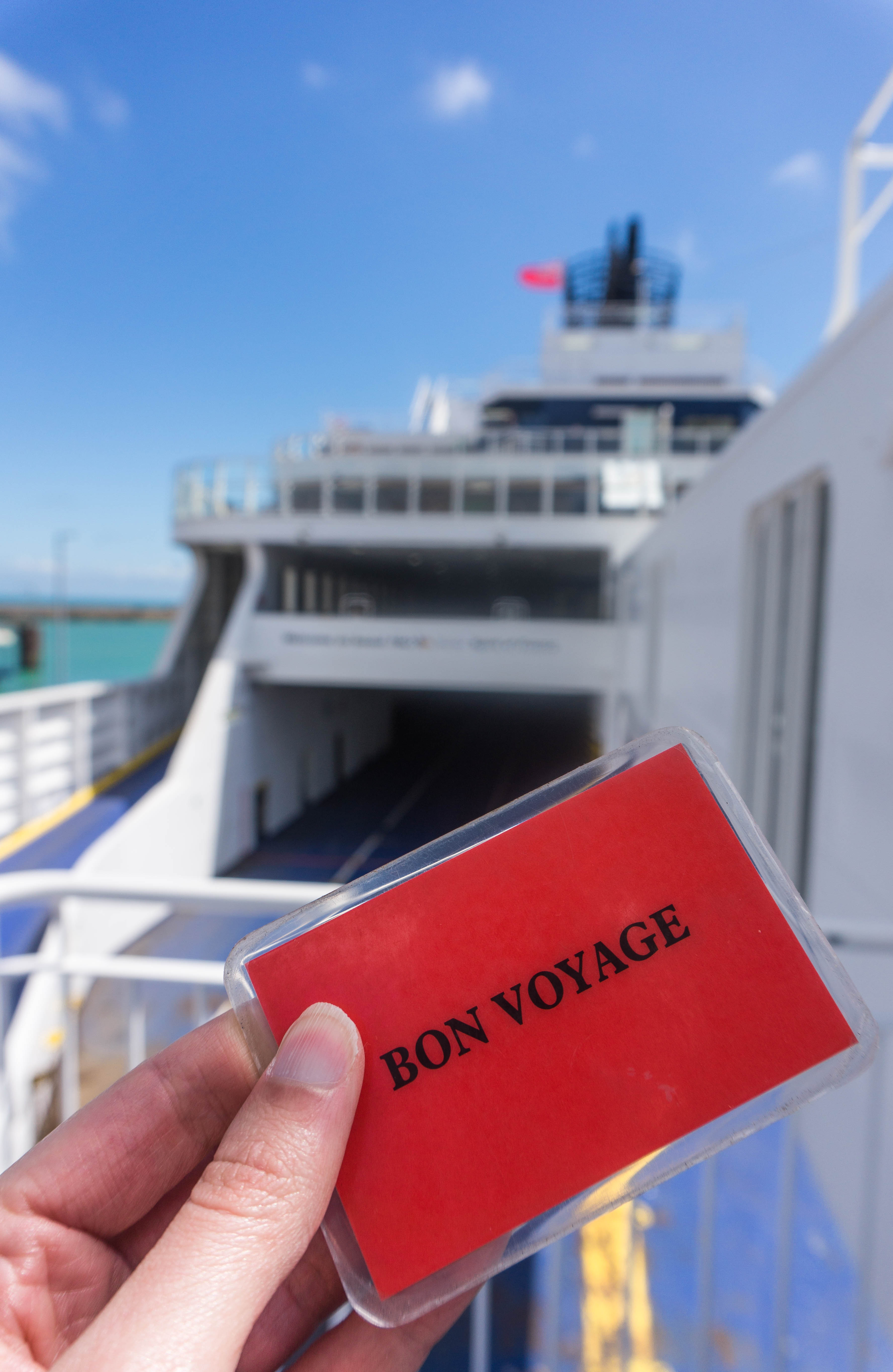
We’ll be adding to the blog with every stage of the journey, the next being from Calais to Arras. Subscribe to get the latest post straight to your inbox!

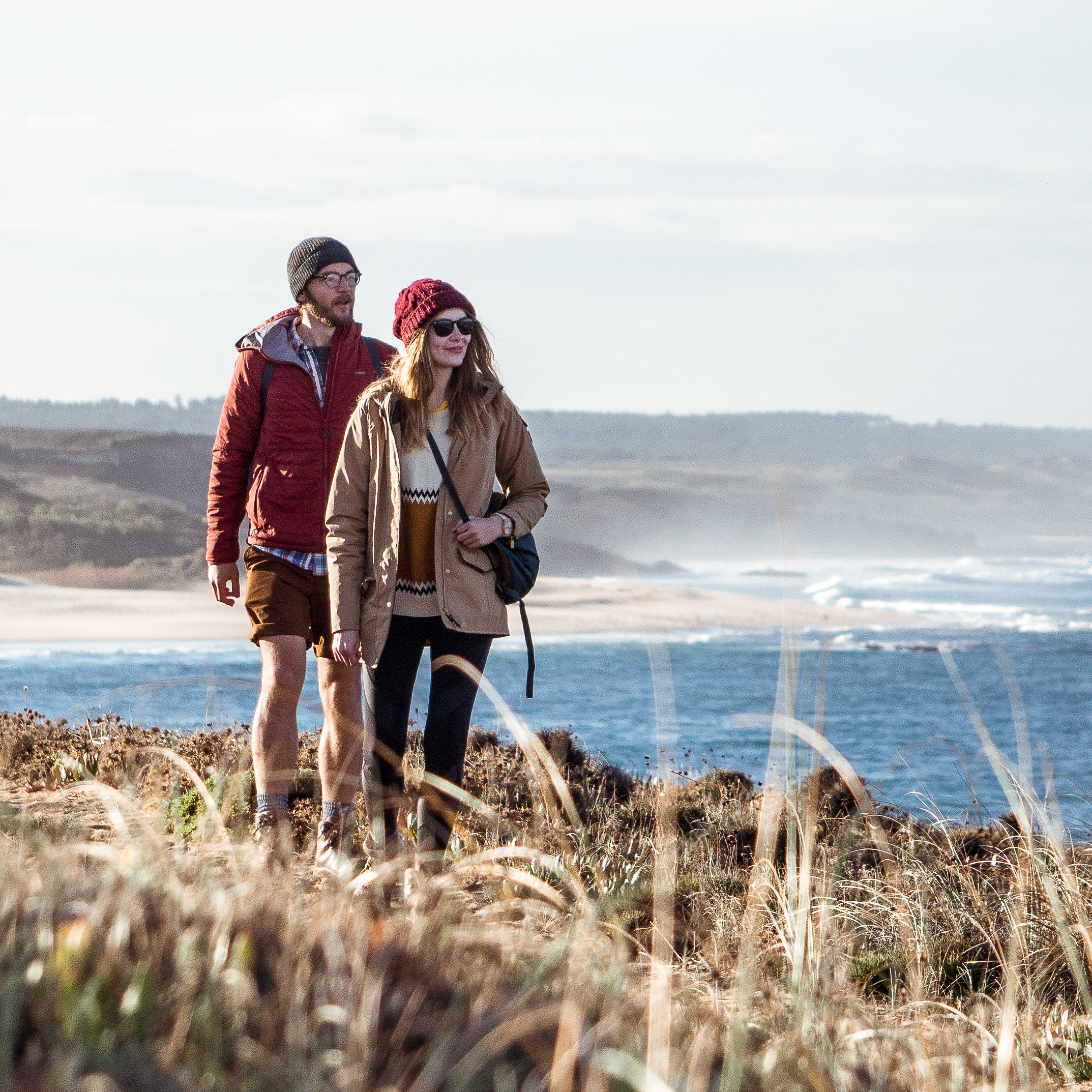
So very informative and descriptive it made me feel as though I was actually walking with you to Rome.
I am very much looking forward to your next post followed by every other post until you reach your goal.
Hi, both of you!
I walked the Via Francigena this year 2018 from Aosta to Rome.
Now I want to walk “the rest” and to start at Canterbury and to walk to Aosta for to make the whole pilgrimage.
I`m German, female, experienced pilgrim. There is no booklet in German on the part between Canterbury and Lausanne. Which information/book/guide did you use? I`m 70 years now and need some background before starting.
Is there a useful English guide with information about the route, maps, places to stay overnight etc. I can´t carry a tent and walk by my own.
I´m very grateful for any information. Hope you can understand my poor English….
Ultreja, Brigitte
Hello Brigitte, your English is very good!
Hope you had a good walk from Aosta to Rome. Good idea to walk the first half now, it’s an excellent journey!
We used both the Cicerone guide and the Lightfoot guide. They follow different routes at different times, so it’s good to have a choice of which way to go! The Cicerone is more out of date than the Lightfoot, but the Cicerone has more background information about the places you are going through which is helpful. Both offer a good breadth of accommodation available, with numbers and e-mails, etc. We’ll be publishing our own accommodation list in full soon, so keep a look out for that (you can subscribe if you wish, so you don’t miss the post!).
Thanks for your message, good luck planning!
Luke & Nell
Dear Luke & Nell
Did you take a sleeping bag on VF? I will not be camping, so hoping I can leave it behind? Have undertaken two long distance pilgrimages: one required a sleeping bag; the other did not. Makes a difference to the pack weight.
Regarding Brigitte’s query. The Via Francigena Official site announced in May 2018 that VF guide from Canterbury to Gran San Bernard will be published in 2019 in English and French by Swiss publisher. https://www.viefrancigene.org/en/
Hi Maree – we did take sleeping bags on the VF, because we camped about 60% of the time in France and Switzerland. The sleeping bags were needed in some of the pilgrim accommodation along the way. We would recommend taking a sleeping bag if you want to stay in pilgrim accommodation!
Interesting that a Swiss publisher will be publishing in English. You can trust they’ll include very good maps! It will be interesting to see which route they decide to take.
Thank you for the message.
L&N
Hello
Just bumped into your blog. Fantastic. Thanks.
Your description of leaving from Canterbury cathedral is so like departing from Le Puy-en-Velay Cathedral in France – a very special experience. My wife and I wandered the GR65 and then ‘camino’ across northern Spain from March to June 2018. A true life highlight. I will be reading thru your posts with my eyes closed imaging landscapes, people, food and culture with your wonderful descriptions. cheers from Australia. john
Thanks very much for your message John. It really is a special moment heading out on a long walk. We often think back to walking through the streets of Canterbury and realising the same walk would take us to Rome!
I read that it took you two days to walk from Canterbury to Dover. Where did you stay the 2nd night? Thanks.
Hi both, we are walking Lucca to Siena beginning April. As a “practice run” we plan to walk Canterbury to Dover in 2 weeks. Is the route well marked?
Thanks
Sorry for the ridiculous delay, Olivia – did you manage to take on Lucca to Siena in April?